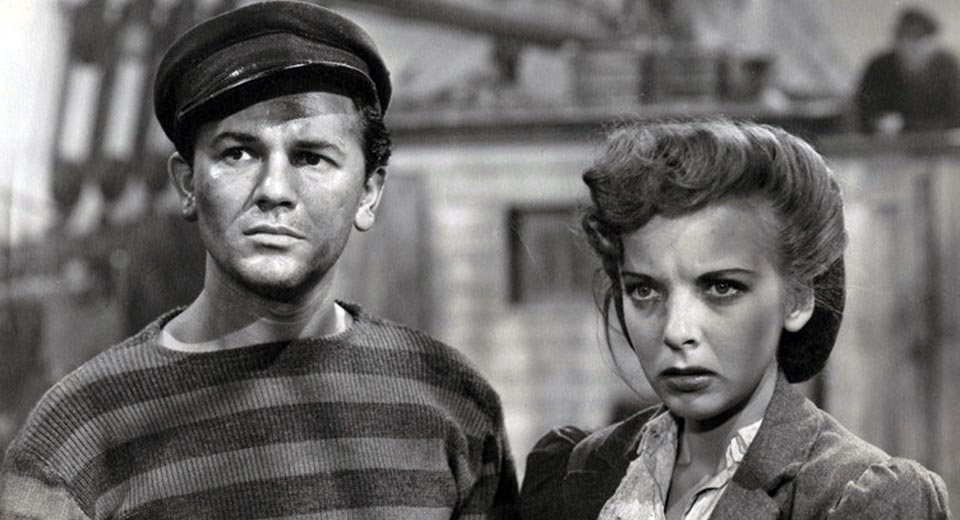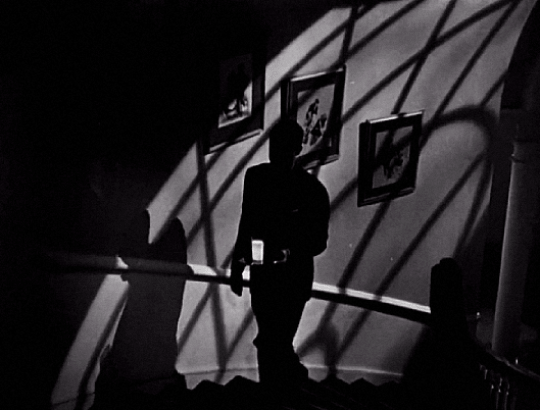my favorite movies of 1941:
(1) Citizen Kane
(3) The Sea Wolf
(4) Suspicion
(5) Love Crazy
favorite of 1941:
Citizen Kane(Orson Welles, Joseph Cotten, Dorothy Comingore, Everette Sloane, Ray Collins, Agnes Moorehead. Directed by Welles.)I don’t agree with those who say this is the greatest movie of all time. But it might have some of the greatest scene-to-scene transitions of all time, like this:
But what’s so great about Orson Welles’s first full-length movie? Why do filmmakers still want to know how to “Citizen Kane” their movies? Here are some answers:2nd favorite of 1941:
Sullivan’s Travels(Joel McCrea, Veronica Lake. Directed by Preston Sturges.)A successful director of Hollywood comedies (played by Joel McCrea) wants to make a more serious movie that addresses poverty. To gain experience for this project, he goes on the road as a homeless man, when he meets a nameless woman (played by Veronica Lake).
Stream Sullivan’s Travels on these sites.
3rd favorite of 1941:
(Edward G. Robinson, Ida Lupino, John Garfield. Directed by Michael Curtiz.)
In this nautical noir based on a Jack London novel, Edward G. Robinson plays the title character, the Sea Wolf, a captain who runs his ship as a vicious tyrant. The Sea Wolf is about more than sea-adventure movie cliches like mutiny plots and men overboard; it’s about class conflicts and clashing intellectual visions. One of the more contemplative scenes reveals that the Sea Wolf is surprisingly erudite: he’s been reading Nietzsche, Darwin, and Herbert Spencer (the social Darwinist who coined the phrase “survival of the fittest”). The Sea Wolf quotes Milton’s Paradise Lost:
The strong cast is rounded out by John Garfield and Ida Lupino. They play fugitives, but their legal problems are less important than how they struggle to see themselves fitting into civilized society on solid ground.
John Garfield tragically died in his 30s, apparently having been beaten down by the stress of being blacklisted, which ruined his career. His role in The Sea Wolf has him pushing up against the senseless prevailing order.
Ida Lupino plays the only woman on the ship — a prescient role for Lupino, who later became a path-breaking director at a time when it was almost unheard of for women to direct Hollywood movies.
The Sea Wolf was directed by Michael Curtiz, who gave the movie a dark but romantic atmosphere that might call to mind his best-known work, my favorite movie of 1942: Casablanca.
Until 2017, 13 crucial minutes were believed to be lost from The Sea Wolf, so you didn’t get to see all the material that fleshed out the Sea Wolf’s character (described here by Leonard Maltin). Fortunately, those scenes have been found and restored, and now we can appreciate The Sea Wolf like never before. You can stream it on Tubi (free with ads) or these sites.
4th favorite of 1941:
(Cary Grant, Joan Fontaine, Nigel Bruce. Directed by Alfred Hitchcock.)
I kept wondering if I was watching a thriller or a romantic comedy. Is Cary Grant a sociopath plotting to kill his wife, or a loving husband with a forgivable mischievous streak?
What makes this uncertainty palpable is Joan Fontaine as his wife, giving the only Oscar-winning performance in any Hitchcock movie. Her face tells so much of the story — in love, but constantly looking for clues about who she really married.
Suspicion is the kind of ’40s movie that will never be made again: the softest of suspense movies, wrapped in a sumptuous package. The studio forced Hitchcock into a compromise he resented, but that tension is part of why the movie is so delightfully weird. It’s far from the best Hitchcock movie, but I’ll defend one thing about Suspicion: the ending Hitch hated is just what it needs to keep us on our toes and questioning everything.
Stream Suspicion on these sites.
5th favorite of 1941:
(William Powell, Myrna Loy, Gail Patrick, Jack Carson. Directed by Jack Conway.)
William Powell and Myrna Loy had such good chemistry that they were paired up in 14 movies. In this one, he’s so crazy about her that he’s willing to act truly crazy if that will stop her from divorcing him.
Stream Love Crazy on these sites.
Click here for the full list of my favorite movie(s) of each year from 1920 to 2020.







Comments
Post a Comment
Thanks for submitting a comment on my movie blog! 🎬 Your comment won’t show up here right away. 😐 To make sure your comment gets seen, I recommend sharing this post on social media and saying whatever you feel like! 🤓